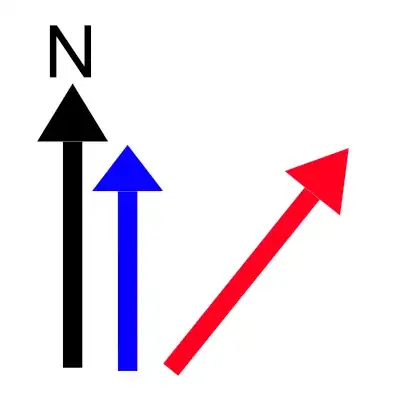I watched this very interesting video on the speed of light, which stated that no-one has actually measured the speed of light, but rather the round trip speed of light. In essence, this video suggests it would be possible for light to travel instantaneously in one direction, and at half the "speed of light" in the other direction, and this would have the same experimental result as if the speed of light is constant.
I have one big issue with this idea. Assuming there is a "cosmic north" in which light is faster in one direction than another, wouldn't that be relevant when shooting beams of light at angles off of this "cosmic north"?
Consider the following diagram, where "cosmic north" (an axis in which the speed of light is instantaneous) is the black arrow, a red vector which represents the velocity of a photon, and and a blue vector which represents the velocity of the photon projected onto the "cosmic north".
because there is a portion of the photons velocity which is along the direction of the cosmic north, the velocity of that photon along that axis would have to be some fraction of infinity. As that would remain infinite, in this hypothetical scenario, any angle <90deg and >-90deg would be impossible to obtain.
My question is, does this line of thinking make the "instantaneous one way, half speed the other way" model of light impossible?
